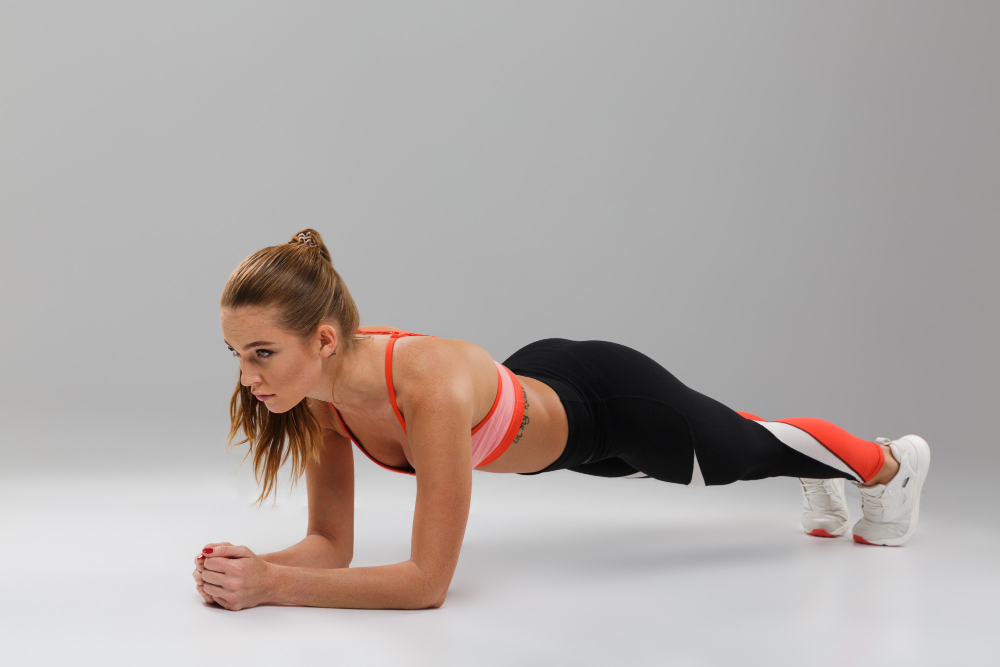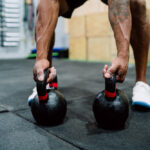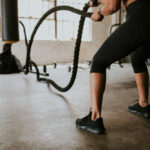Plank leg raises look simple. Just lift your leg in a plank, right? But done right, they’re a full-body challenge disguised as a core move. The problem? Most people treat them like filler. They rush through reps, swing their legs around, and wonder why they don’t feel anything.
But here’s the truth, this move can hit deep. It lights up your core, fires up your glutes, and trains your body to resist movement. Plank leg raises aren’t just a variation. They’re a core test. You either own the movement, or it exposes every weakness in your midsection.
Why Plank Leg Raises Work (When Done Right)
Here’s what’s really going on when you get it right:
- Deep Core Activation: You’re bracing the transverse abdominis, not just flexing the surface-level abs.
- Anti-Rotation Training: Lifting one leg creates an imbalance. Your job? Keep your hips square. That builds serious rotational control.
- Glute Engagement: Your glutes should be doing the lifting. Not your lower back, not momentum.
- Spine Protection: No crunching, no twisting. Just full-body tension that trains your core to support your spine under load.
How to Mess Up Plank Leg Raises
Most people make this move useless without even realizing it. Here’s how:
- They lift the leg too high. When your heel shoots up to the ceiling, your lower back arches like crazy.
- They let the hips twist. One hip hikes up, the other drops, and suddenly it’s not a plank anymore. If your hips aren’t level, your core’s not doing its job.
- They rush the reps. Fast reps kill control. You’re just flailing at that point. Slow and steady exposes weakness and builds real strength.
- They hold their breath. Sounds small, but it matters. If you can’t breathe while bracing, you’re not truly in control. You’re just locked up and waiting for it to end.
- They forget the glutes. This is half glute exercise, half core move. If your butt’s not working, your back will take the hit.
What “Doing It Right” Actually Looks Like
Good plank leg raises look boring. And that’s exactly the point. If you’re doing it right, nothing moves, except your leg.
Here’s how to nail it:
- Start in a strong plank. Hands under shoulders, feet hip-width apart, body in a straight line. No sagging hips or piked butt.
- Brace your core like you’re about to get punched. This isn’t a casual hold. Your abs should be firing hard.
- Squeeze your glutes. The leg that’s staying on the ground? Clench it. The one that’s lifting? Same thing.
- Lift your leg slowly. No higher than hip level. Think 6-8 inches. Pause at the top for a second.
- Lower with control. Don’t drop your leg. Lower it like you’re resisting gravity.
- Keep your hips perfectly still. If someone put a glass of water on your lower back, it should stay there.
Want to work more intensely on your core? Check out these lower ab exercises that you can do with resistance bands.
Modifications and Progressions
Whether you’re just starting out or looking to level up, there’s a version of this move that’ll challenge you. Don’t skip ahead. Earn your progress.
Beginner Options:
- Knee Plank Leg Raises: Same form, but on your knees. This reduces the load so you can focus on glute squeeze and hip control.
- Plank Leg Taps: Instead of raising the leg, just lift slightly and tap it out to the side. Less intense, but still trains stability.
Intermediate (Standard):
- Plank Leg Raises: Full version, slow and controlled. Add a short pause at the top to crank up the difficulty.
Advanced Progressions:
- Elevated Plank Leg Raises: Hands or feet on a step. More core demand, more balance required.
- Banded Plank Leg Raises: Add a mini band around your ankles. Glutes will light up fast.
- Slider Plank Reach-Backs: Instead of lifting, slide one leg straight back and return. Forces even more core control.
Final Thoughts
Plank leg raises reveal how much control, strength, and awareness you actually have. Done right, they build serious core stability, fire up the glutes, and lock in full-body tension. But rush through them, and you might as well skip them.





